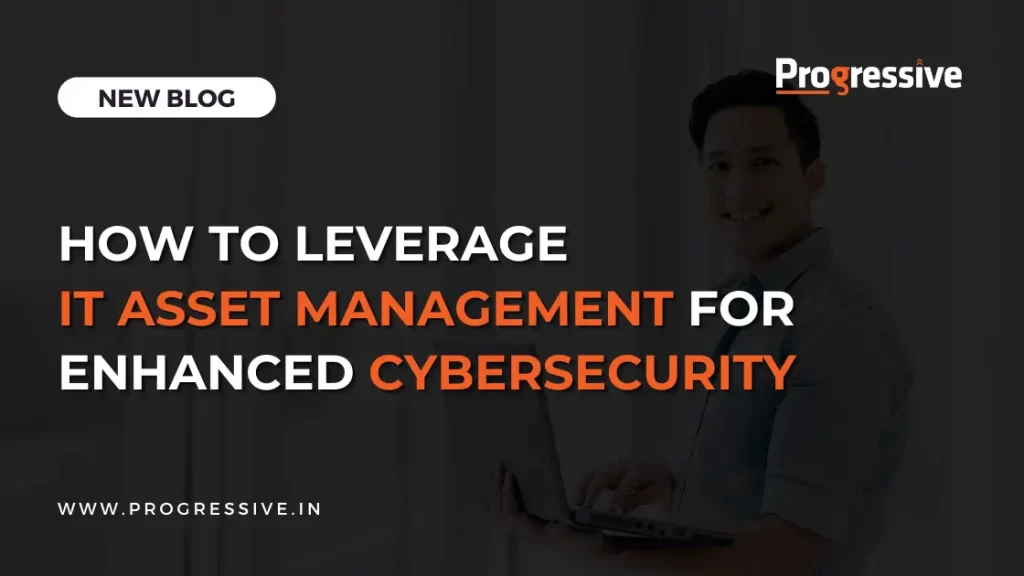
In the contemporary digital era, the intersection of IT Asset Management (ITAM) and cybersecurity has gained critical importance. Effective ITAM not only helps organizations track and manage their assets but also plays a pivotal role in strengthening cybersecurity. This comprehensive blog will explore how leveraging ITAM can substantially enhance your cybersecurity efforts.
IT Asset Management (ITAM) involves the systematic process of maintaining, upgrading, and disposing of IT assets within an organization. This includes hardware, software, networks, and data. Effective ITAM ensures that all assets are accounted for, properly utilized, and maintained throughout their lifecycle.
Cybersecurity, on the other hand, refers to the protection of systems, networks, and data from digital attacks. These attacks are aimed at accessing, changing, or destroying sensitive information, extorting money from users, or interrupting normal business processes.
According to the The global IT Asset Management (ITAM) Services market, valued at $3,703.2 million in 2023, is projected to reach $7,469 million by 2030, with an anticipated CAGR of 10.3% from 2024 to 2030.
By integrating ITAM with cybersecurity strategies, organizations can create a robust defense against cyber threats. Here’s how:
Comprehensive Asset Inventory
The first step in enhancing cybersecurity through ITAM is to maintain a comprehensive inventory of all IT assets. This includes:
A detailed inventory allows organizations to know what assets they have, where they are located, and how they are being used. This visibility is crucial for identifying and protecting vulnerable assets.
- Hardware: Servers, computers, mobile devices, and networking equipment.
- Software: Operating systems, applications, and licenses.
- Data: Databases, customer information, and proprietary data.
- Network Components: Routers, switches, and other networking devices.
Regular Asset Audits
Regular audits are essential to ensure that the asset inventory is up-to-date and accurate. These audits help in:
- Identifying unauthorized or rogue devices connected to the network.
- Ensuring compliance with software licensing agreements.
- Detecting outdated or unsupported software that could pose security risks.
By regularly auditing IT assets, organizations can promptly address any discrepancies and mitigate potential security threats.
Patch Management
One of the critical aspects of ITAM that directly impacts cybersecurity is patch management. Regularly updating and patching software and hardware is vital to protect against known vulnerabilities. An effective patch management strategy includes:
- Automated Patch Deployment: Using automated tools to deploy patches across all devices ensures that no device is left unprotected.
- Patch Testing: Testing patches in a controlled environment before deployment to avoid compatibility issues.
- Regular Patch Schedules: Establishing regular patch schedules to ensure timely updates.
By keeping all assets updated, organizations can reduce the risk of exploits and vulnerabilities being targeted by cybercriminals.
Configuration Management
Configuration management involves maintaining the desired state of all IT assets. This includes:
- Standardizing Configurations: Ensuring all devices and software follow standard configurations to reduce variability and potential security gaps.
- Monitoring Changes: Keeping track of changes to configurations and ensuring they do not introduce new vulnerabilities.
- Compliance: Ensuring configurations comply with industry standards and regulations.
Proper configuration management helps in maintaining a secure and stable IT environment.
Asset Lifecycle Management
Managing the lifecycle of IT assets from procurement to disposal is another critical aspect of ITAM that enhances cybersecurity. This includes:
- Secure Procurement: Ensuring that all purchased assets meet security standards.
- Maintenance: Regular maintenance and updates to keep assets secure.
- Disposal: Securely disposing of assets to ensure that no sensitive data is left behind.
By managing the entire lifecycle, organizations can ensure that assets remain secure throughout their use and that sensitive information is not compromised during disposal.
Incident Response and Recovery
Effective ITAM plays a vital role in incident response and recovery. By having a detailed inventory and configuration management system, organizations can quickly identify and isolate compromised assets. This helps in:
- Rapid Response: Quickly identifying affected assets and taking appropriate actions to contain the breach.
- Data Recovery: Ensuring that backup systems are in place and that data can be restored promptly.
- Post-Incident Analysis: Analyzing incidents to understand the root cause and prevent future occurrences.
A well-documented ITAM system enables a swift and effective response to cybersecurity incidents.
Compliance and Reporting
Many industries are subject to regulatory requirements that mandate stringent cybersecurity measures. Effective ITAM helps organizations:
- Ensure Compliance: By maintaining accurate records of all assets and their configurations, organizations can demonstrate compliance with regulations such as GDPR, HIPAA, and SOX.
- Generate Reports: Producing detailed reports for audits and assessments, helping to identify areas of improvement.
Compliance with regulatory standards not only avoids legal penalties but also enhances overall cybersecurity posture.
Conclusion
Leveraging IT Asset Management for enhanced cybersecurity is a strategic approach that provides numerous benefits. By maintaining a comprehensive asset inventory, conducting regular audits, implementing patch and configuration management, and managing asset lifecycles, organizations can significantly reduce their risk of cyber threats. Moreover, effective ITAM supports incident response, recovery, and regulatory compliance, making it an indispensable component of a robust cybersecurity strategy.
By integrating ITAM with cybersecurity efforts, organizations can ensure that their IT environment is secure, resilient, and compliant, ultimately protecting their critical assets and data from cyber threats.
Our comprehensive ITAM and cybersecurity services ensure that you maintain a detailed inventory of all assets, conduct regular audits, implement effective patch and configuration management, and manage the entire asset lifecycle securely. This proactive approach not only minimizes vulnerabilities but also supports rapid incident response and ensures compliance with industry regulations, thereby protecting your critical assets and data. Partner with us to fortify your IT infrastructure and safeguard against cyber threats. Get in touch with us today to discover how we can customize our solutions to fit your unique needs.